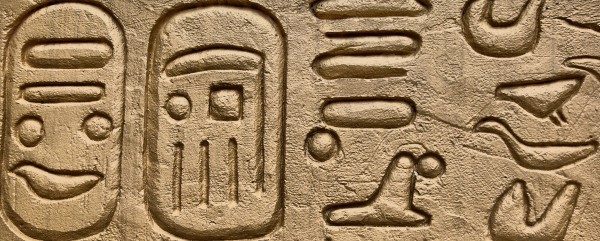
…some thoughts on links and breaks
Here are two extracts from the short story Grace, the penultimate story in James Joyce’s collection, Dubliners:
*
He got up on the car. As it drove off he raised his hat to her gaily.
‘We’ll make a new man of him,’ he said. ‘Good night, Mrs Kernan.’
Mrs Kernan’s puzzled eyes watched the car until it was out of sight. Then she withdrew them, went into the house and emptied her husband’s pockets.
She was an active, practical woman of middle age.
***
Everyone laughed heartily.
‘There’s a nice Catholic for you!’ said his wife.
‘No candles!’ repeated Mr Kernan obdurately. ‘That’s off!’
The transept of the Jesuit Church in Gardiner Street was almost full; and still at every moment gentlemen entered from the side door and, directed by the lay-brother, walked on tiptoe along the aisles until they found seating accommodation.
*
The story called Grace is split into three large sections. The two extracts straddle the internal junctions that create those splits. What I am interested in is to examine whether or not these junctions are in the form of ‘links’ or ‘breaks’ in the narrative, and to explore what might be the functions of such junctions, and to ask whether or not it is useful to us as writers to have such a structural concept.
In both cases there is a clear intention, shown by the provision of a line of white space, to make structural divisions of the story at these two points: to make junctions between the segments of the story. This space amplifies the junction already made by the full-stop-and-capital-letter structure of sentence ending and beginning, and adds to the amplification that has already been added by the provision here also of a paragraph break. In effect this is a triple strength marker of a gulf or barrier across which the reader must jump. Yet it is not the same gulf in both cases, nor will it require the same leap.
Looking at them in order, extract one has both edges of the gulf marked by the same words: ‘Mrs Kernan’. This is akin to the author pinning you against the wall with his knee while he changes his grip on your throat from one hand to the other. At the end of the first section of the story our attention is focussed on her, and at the beginning of the next it is still there. Not only that, but we are still at the same location, and in the same moment of time. Another analogy might be that the author holds still the three elements of character, and locations in time and space, while we step across the gap between the different parts of his story.
It’s worth noting that this second section starts with a very short paragraph, of two sentences, before the more minor junction of another paragraph break takes us on to an examination of who and what Mrs Kernan is.
The group of paragraphs that we are leaving has brought us to this point. The group of paragraphs that we are entering will carry us on from it. To my way of thinking this is a clear example of a linking junction.
His second junction is quite different. The white space line is no greater. It still amplifies a sentence ending and another beginning, and the provision of a paragraph break too, but we don’t end and begin on the same words. Our focus does not remain on the same character. We are not at the same place, nor in the same moment of time. More importantly perhaps, we are not in the same relation to the story on the other side of the gap, nor to the narrator, and the ambience of the story has changed radically.
The scene we are leaving is jocular, irreverent, and intimate. We are close in among the characters, sharing their half comic, half superstitious banter about the ‘retreat’ that Mr Kernan will undertake. The author barely intrudes, ‘obdurate’ is his only comment in the actual extract. The rest is the speech and demeanour of his characters.
Beyond that leap, the next scene is entirely different. The characters have vanished. We find ourselves in the transept of a church, and by placing it ‘in Gardiner Street’ an exterior reference, we seem distanced from it. Here the narrator is omniscient, third person, and detached. He describes dispassionately nameless and unspecified ‘gentlemen’ who walk on ‘tiptoe’ in search of the awkwardly presented ‘seating accommodation.’ How much less formal this would have seemed if he had said they were looking for a seat! That this paragraph is a twelve line one, without any of the characters being specifically identified, underlines the difference from the previous junction.
One similarity between the sections on either side of this junction is that they both deal with religion. But whereas the one is human and comic, the other is institutional and formal. At this junction the author breaks several threads, all at once. He changes place, time, character, ambience and the position of the narrator in relation to the story, and to the reader. These elements are the ones commonly established at the start of stories, and to change them requires the author, in effect, to re-start the story. This makes me view this junction as one of the breaking kind.
There are junctions between words in phrases and clauses, between phrases and clauses in sentences, between sentences in paragraphs, paragraphs in sections, or chapters, between chapters in books, and in multi-volume works, between books.
Short stories, which have the distinguishing feature of being readable ‘at a sitting’, are made up of them as much as any other form of writing. The junctions are points where something ends, and that ending is followed by a beginning. It is a commonly held belief, which I share, that short stories are in the main, about their endings. I have used the analogy of a short story ‘running out like an anchor chain’, which predisposes me to expect links, rather than breaks, in their junctions. Here, quite clearly, Joyce has used one of each, at the ‘section’ level.
There is another aspect to this. All these endings and beginnings bring our attention into focus. What a sentence, or paragraph, or section ends with catches our attention, and so does the beginning that follows it. This suggests that it may not be only to ‘finish’ with some element of a story that we use them, but to draw attention to a part of it. If we recast these two extracts of Joyce’s, changing not one word, but only the layout, do we change something about the story, as we experience it? Try this at home, with the full text.
*
He got up on the car. As it drove off he raised his hat to her gaily.
‘We’ll make a new man of him,’ he said. ‘Good night, Mrs Kernan.’ Mrs Kernan’s puzzled eyes watched the car until it was out of sight. Then she withdrew them, went into the house and emptied her husband’s pockets.
She was an active, practical woman of middle age.
***
Everyone laughed heartily.
‘There’s a nice Catholic for you!’ said his wife.
‘No candles!’ repeated Mr Kernan obdurately. ‘That’s off!’
The transept of the Jesuit Church in Gardiner Street was almost full; and still at every moment gentlemen entered from the side door and, directed by the lay-brother, walked on tiptoe along the aisles until they found seating accommodation.
*
In the first case, is the transition from our focussing on the group bringing Mr Kernan home, to focussing on what his wife does next, all but lost? In the second, does the starting afresh become merely confusing? In both case the junctions add clarity to the point of the story at that point. The juxtaposition of what is evoked by the words of a story will be to amplify, or contrast with, or to offer an alternative to what has gone before. What follows modifies our understanding of what has gone before. What precedes prejudices our view of what follows.
Is there a value to noticing all this? To having a concept of ‘links’ and ‘breaks’? The answer to that is to look at our own work, and to see if we find them there, and, when we do, to make sure that they are being used effectively.


Mike Excellent work Mate, Creative writing is an art form, and to see such professionalism shine, makes this blog a dues y….congrats…
—
Mike atMesa Auto Repair